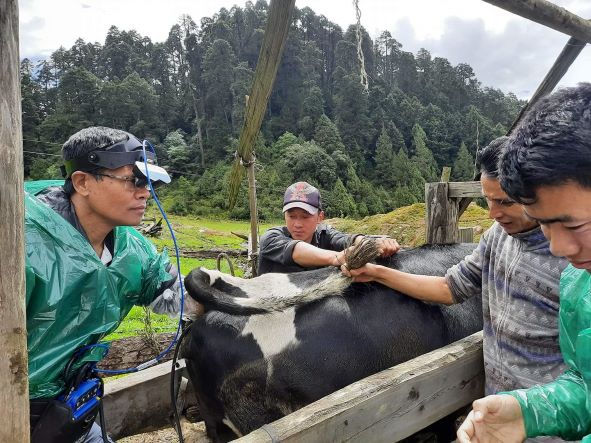Effectiveness of assisted reproductive technologies for national dairy herd improvement in Bhutan
Keywords:
artificial insemination, assisted reproduction technologies, estrous synchronization, multiple ovulations, sexed semenAbstract
Assisted Reproductive Technologies (ARTs) have been the game changer in transforming dairy herd composition and enhancing milk production. For better understanding the efficiency and effectiveness of applied ARTs, data on semen cryopreservation and Artificial Insemination (AI) performed for the past many years, estrous synchronization protocols applied in cows/heifers, 25 trials on embryo flushing/ Multiple Ovulation and Embryo Transfer (MOET) conducted and field application of sexed semen technology were validated and analyzed. Findings suggest that AI coverage in the country is low (12%). However, over 87% of frozen semen available for AI services is produced within the country. In-country semen (pedegree selected) and imported conventional semen (progeny tested) gave birth to equal percentage of crossbred progenies in the field hinting that semen produced within the country meets required standards. Strengthening of in-country progeny testing scheme to select superior sires and gearing towards genomic sire selection will further improve semen quality. Estrous synchronization with CIDR-B/TRIU-B resulted in higher response rate than simple ovsynch protocol (p<0.008). Nevertheless, synchronization and fixed timed AI is ineffective when body condition score is ≤2.4 because such animal when inseminated rarely get pregnant. Hence timing syncronization during lush season when body condition of animals is optimum (2.5-4.5) can result in higher pregnancy rate. Introduction of MOET trial at the research station has recovered 19.6% (31) viable embryos for cryopreservation. However, embryo flushing/MOET being complex and resources intensive procedures, its scope for wide-scale application in the field is very limited at the moment. Advancement of research on Ovum Pick-Up and In Vitro Fertilization is necessary to improve efficiency of MOET program. Sexed semen technology resulted in 89.6% female birth. But for effective utilization of costly sexed semen, its application is recommended preferentially in virgin heifers for higher conception rate. The current study concludes that among sets of ARTs tested and applied, AI will continue to be the most viable option for cattle breed improvement program in Bhutan. Hence, reinforcing AI services combined with other ARTs that are efficient, feasible and viable can bring about substantial socio-economic benefits to the farmers.

Downloads
Published
License
Copyright (c) 2022 Bhutan Journal of Animal Science

This work is licensed under a Creative Commons Attribution 4.0 International License.





